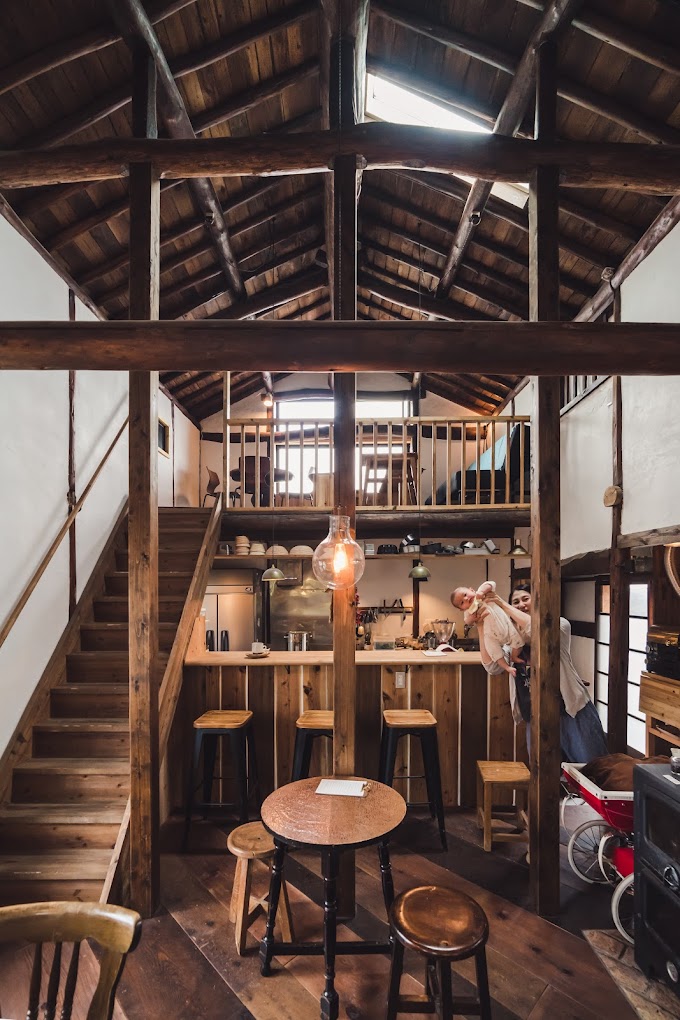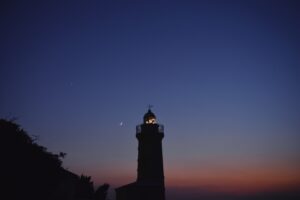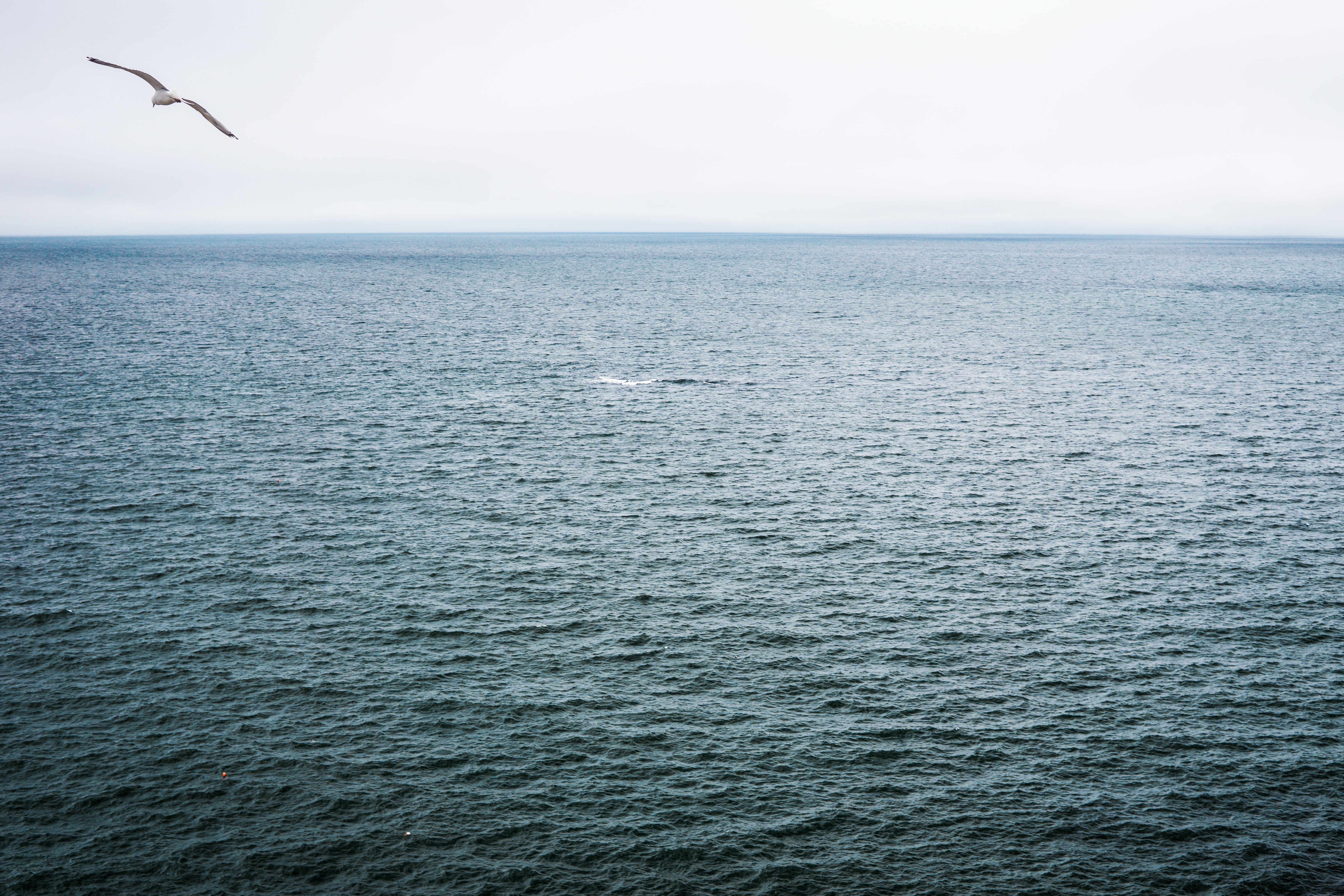This article originally appeared in the February 2023 issue of CONNECT.
The second installment of a series going through the unique islands of the Seto Inland Sea
Victoria Clayton (Miyazaki)
Megijima & Ogijima
After spending the night sleeping in the back of my car, I wake up somewhat refreshed and ready to take on the day by visiting two islands, Megijima and Ogijima. The online guide lists a small amount of artworks and after yesterday’s unexpected, and sometimes difficult, visit to a former leper hospital, I instead looked forward to an easy and laidback day, leisurely exploring the islands.

As soon as I disembark from the boat, I am greeted by Takahito Kimura’s work Seagull Parking Lot, three hundred seagulls that line the wall and move in unison with the direction of the wind. As they sway and dance majestically, I’m reminded that I haven’t seen seagulls in years. Captivated by their movement, I forget about all the food they have stolen out of my hands in the past and instead eagerly follow them along the coastal path. They lead me to a small and unimposing two-story complex, which houses a group of artworks, workshops and shops under the fitting name “Little Shops on the Island”.

Unlike Oshima, the Little Shops’ atmosphere was light and friendly, like a new neighbourhood hang out that’s trying to find its feet. As I walked through the doors, I was welcomed by a ten-person table-tennis table—but, having left my dancing friends on the wall, I gave racket rental a miss and instead look around, deciding where to start. Looking lost and confused, the owner of the crepe shop came over and started talking to me and eagerly introduced me to one of the artists who was exhibiting. The next thing I knew, I was being given a private tour of the building.
The artist, Kentaro Yanagi, is a glassmaker, fisherman, and hunter. He took me to his exhibition The Glass Fisherman, “a shop featuring glass lures and fishing equipment for catching dreams from the air”. The room was filled with hanging glass fishing hooks that glisten with every step; I walked around the sparkly room, enchanted. His goal is to create a chandelier, but at the time of visiting he had arranged them into a love heart.
Alongside his showstopping piece were other equally impressive works, most notable: an elaborate wine decanter controlled by a glass crank. The piece was both intricate and dainty, while also being functional and utilitarian, just like Yanagi himself, a fisherman by day, an artist by night. I was completely in awe, not only of the intricacies of the artwork but of Yanagi himself, and the opulent and luxurious works created by the humble fisherman. How two seemingly opposing characteristics coexist in a majestic dance, like my old seagull friends. It proved to me that the pursuit of our creative endeavours is never in vain, moreover those works hold the ability and power to create something that can transcend the stereotypical ideas of ourselves.
I spent the next hour or so wandering around the rest of the artworks, lost in the trinkets of Eros Nakazato’s Tinker Bell’s Factory, a repair shop that cultivates the heart of believing in things, then stumbling into a laundromat or an artwork by Leandro Erlich, next was Aiko Miyanaga’s Hair Salon Kotobuki, but it was closed and the Thrift Shop Deplication Remains display of collected items had nothing I wanted to buy.
I left the little shops feeling both uplifted and confused. Did I just see art, or did I just go to a shopping arcade? Luckily, the next artwork I encountered was Nicolas Darrot’s Navigation Room. It took me out of a consumer centric mindset and transported me back to quiet contemplation.
Darrot’s work is a kinetic sculpture of discs and music boxes that correspond to each other and “mark the course of a modern Ulysses.” The large piece is shown in an old, abandoned house with a wall length window that overlooks the varied relief of the other islands nestled in the calm inland sea. Listening to the jingles evoked a blissful serenity, unlike Oshima’s jingle of discomfort.
Before leaving for the next island, I wanted to quickly stop by and visit Leondro Erlich’s Presence of Absence. I walked into the traditional Japanese house and at first glance it was a nice novelty, a room set up with a mirrored wall. The space of reflection was just that, a reflection of a place for contemplation—then against the far wall I saw a shadow and realised that behind it was in fact another room. I walked through to find a duplicate of the mirrored room, where every speck of dust seemed to be in the exact space of the room before.
However, as I had just spent the best part of an hour reflecting inside the previous artwork I hurriedly continued to the next area, the reading room. I expected the books to be in Japanese but there was a mix of many languages, so like any self-proclaimed bookworm I took a few off the shelf and began exploring the vast array of exhibition catalogues, artist books and stories that were available to freely read. I originally intended to get the 12 o’clock boat to the next island, but by the time I was done reading I had missed it. The next boat was not scheduled until 2 p.m., so I surrendered to the calmness of the day and went to get lunch from one of the few restaurants on the island.
The small selection of artworks on Ogijima could have deterred me from visiting the island but because of the convenient boat route, I decided it was worth a look. As it turned out, it ended up being one of my favourite islands. On approach to the port, you can see the steep mountain side filled with houses reaching all the way to the peak. I started to regret my shoe choice of slips.
I did come to appreciate my missed boat and long lunch on the previous island because as I disembarked, I saw a sign that said, ‘Ogijima island has under 200 residents’, which is far less than Megijima’s 1000. I expected this island to host a few artworks and perhaps a shop or two. However, continuing the theme of the trip this far, I was yet again surprised.
As I walked up the narrow streets, I was hit with a smell of freshly baked bread. I didn’t intend to stop so soon after my leisurely lunch, but the atmosphere of the café, Damonte & Co., and its beautiful view compelled me to stop for a coffee. That, and also, I thought I best take a rest as I didn’t want to risk injury walking up the hill in slips. . . . After this I resolved not to stop again, but as I continued along the streets I found myself involuntarily stopping, not only because of the arduous climb around the town, but to enjoy the incredible views on every corner.
The artwork on this island had quite a challenge to compete with the landscape, but two in particular stood up to the task. In the first, Goro Murayama’s Generative drawing for Japanese paper house 2.0, the artist used the walls of the near century old house as a canvas and painted intricate and elaborate drawings to fill both stories of the house. The intricate and detailed paintings hypnotised me into a state of wonder and child-like exploration, which was further compounded by the experience of viewing the work itself. In order to see the upstairs work, you had to climb a ladder-like staircase, avoiding the low ceiling beam on your way up, like a playground for adults.
This playfulness continued in Wang Teyu’s No. 105, which was a large interactive piece of work. It was a large green inflatable space which invited the viewer to climb into and around the work. The inflatable structure had slots to put your head through where you would often meet with strangers also viewing the work.
The space invites for a fun and uninhibited approach for interactions to happen, the absurd backdrop for these encounters forces our insecurities and worries to fall away, creating a space for judgement-free happenstances. The green backdrop evades a reference point and evokes an intuitive response bringing viewers back into awareness of here and now.

After walking around the island for a few more hours, I returned to the port to make the last boat. Honestly, part of me really wanted to stay the night. Despite the two islands not being as obviously impactful as Oshima’s, they had in their own quiet way encouraged a gentle yet playful engagement with the state of things as they are—from the duality of the modest fisherman’s grandiose work to the quiet space for contemplation and reflection on Megijima. On the even smaller Ogijima, viewers are persuaded to take a moment to greet beautiful landscapes and encounter strangers in even stranger places.
Victoria spends her time writing, surfing, and exploring all the wonder the world has to offer.



![CONNECT ART ISSUE 2024 SUBMISSIONS [CLOSED]](http://connect.ajet.net/wp-content/uploads/2024/04/ARTISSUE-INSTA-600x500.png)





